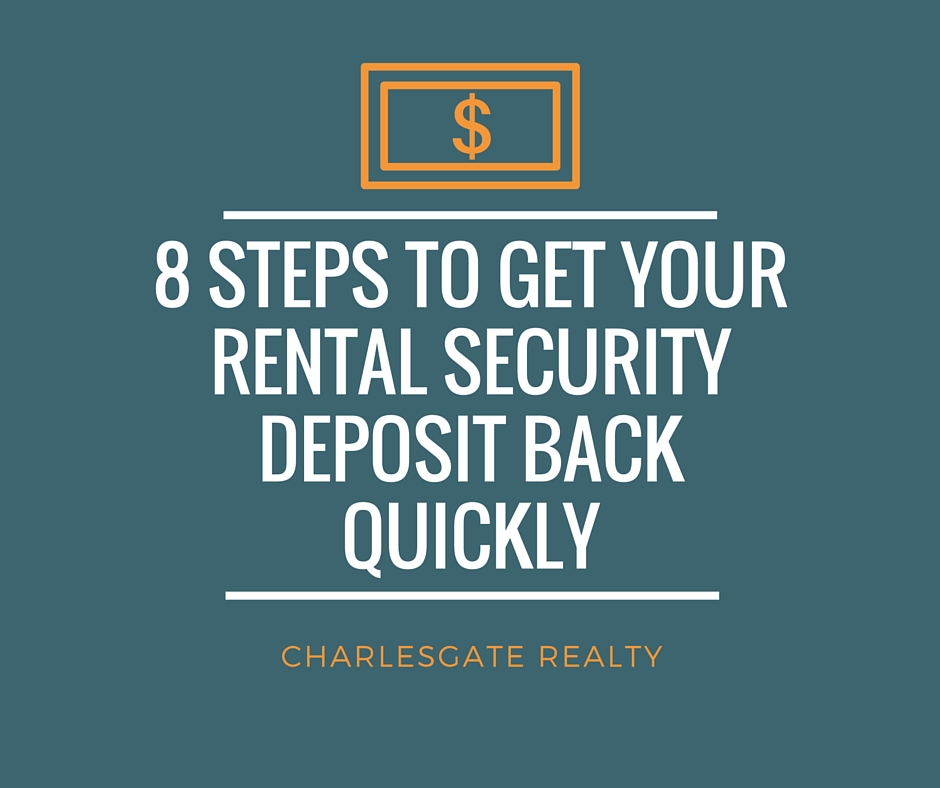8 Steps to Get your Rental Security Deposit Back Quickly
Moving out is always a stressful occasion. It’s made even more stressful if you have to worry about getting deposit back from landlord. You have to educate yourself, it is important to know what is a rental bond, what your rights are so you know what to expect and follow these tips, and when it comes time to do the handover inspection, you should have no problem getting back the full security deposit.
1. Read the Lease Carefully
Before you even move into a place, take the time to carefully read your lease and make sure you understand what is required of you as a tenant. In general, the tenant should not be responsible for normal wear and tear, but is expected to leave the property in good condition. The lease may specify that you need to have carpets cleaned, nail holes filled, walls-repainted by Paint Contractors Dallas, etc. Discuss any areas of the lease that are unclear to you with the landlord before you sign on the dotted line.
2. Understand the Law
Laws and rules vary by state and city, but know your rights before moving in. Many renters don’t know that It is illegal for a landlord to keep a deposit without providing an explanation. In Boston, law requires the landlord to hold a deposit in a separate, interest-bearing account in a Massachusetts bank. Also, the landlord must give you a receipt identifying the bank’s name and address, the account number, and the amount of the deposit within 30 days of receiving your deposit. If the landlord provides a lease agreement that contains any provision that conflicts with the Security Deposit Law and attempts to enforce that provision or attempts to obtain from a prospective tenant to waive any provision of the Security Deposit Law, the landlord is unable to keep your security deposit for any reason including making deductions for damages.
3. Take Photos
Immediately after moving in, and preferably with your landlord present, thoroughly inspect your new place and take detailed notes and photos. Email the photos and any concerns you may have to your landlord, so that you have the conversation documented.
4. Keep Records and Report Problems
After you move in, report any issues by email to your landlord as soon as you notice them. Follow up to make sure they are suitably fixed or accounted for. Take photos and keep good records of everything that happens.
5. Respect the Property and Document Improvements
Know that any damages or issues that are your fault (breakage, pet damages, etc.) are your responsibility to take care of. The sooner you deal with such issues, the easy it is to mitigate consequences. Repairs that you do yourself will usually be much cheaper than what the landlord will take out of your security deposit.
If you want to make improvements in the rental, such as painting, always check with the landlord first. If the improvements are really necessary, the landlord or leasing company may even reimburse you for the cost. Just be sure to carefully document all repairs or improvements and costs.
6. Leave it as you found it
When it is time to move out, make every effort to meet the requirements of your lease and leave the property in good condition. Paint over any walls (with matching paint), remove nails and screws and fill in holes, and deep clean carpets, if needed.
7. Deep Clean
Use this checklist to make sure you clean every nook and cranny. A few things that people often forget:
Clean the windows.
Scrub behind the toilet.
Clean and scrub all parts of the oven.
Scrub off scuff marks from walls.
Here are some tips on preparing your home for winter in Queensland.
8. Be Present for the Handover Inspection
Walk with the landlord through the property during the pre-handover inspection, and address any concerns they may have. Have your move-in checklist and photos on hand. Do not terminate any utility accounts until after inspection has taken place, to allow the landlord to see clearly and check electrical items. Take notes during the inspection, and review any notes the landlord has taken to ensure you’re on the same page.
Try to get your landlord to tell you if they plan on charging you for any items, so that you can try and get it repaired or cleaned before moving out. Whatever they determine, make sure to get it from them in writing, and leave with a clear understanding of when you can expect to get your landlord deposit back. If they are withholding it, try negotiating with them, then send a demand letter with all your documentation. If that still does not work and you feel that you deserve the deposit back, you may take them to small claims court.
About Author: Riya is a freelance writer. She holds a master’s degree from Australia Institute of Business & Technology. She is currently writing for several companies including APM Solutions. She is new to investing, she has been learning a lot by reading the personal finance and business blog in her free time.


